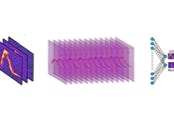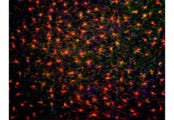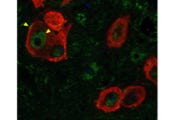Neumaier Lab

Focus. Our laboratory investigates the interface of pharmacology, molecular neuroscience, and behavior. We use strategies that span several levels of organization from RNA regulation, protein translation, cellular plasticity, and neural circuit level analysis of complex behaviors relating to stress and addiction models. We use rat and mouse behavioral models as well as in vitro cultures of cell lines and primary neurons to study components of intracellular signaling pathways.
Questions:
Why are some individuals vulnerable to stress while others are resilient?How can we enhance resilience and recovery? Can we reverse compulsively learned behaviors? Can we reduce the impact of opioid or alcohol withdrawal and the relapse to drug seeking?
1
2
3
4
5
6
Methods.
We use intersectional genetic manipulations in rats and mice to manipulate neural activity and plasticity with DREADD chemogenetic receptors, RiboTag analysis of RNAs under active translation, and a variety of behavioral strategies to understand how neural circuits adapt to stress, develop compulsive behaviors, and exposure to addictive drugs in the hopes of identifying new targets for therapeutics. We are now adapting Crispr gene editing to test whether discrete mutations of key proteins in specific target cells will elucidate the function of these circuits. We use a wide variety of operant conditioning models to investigate drug taking and seeking, memory function, compulsivity, as well as a range of behavioral tests for stress responses, anxiety, and hedonic regulation.
Projects
1. Stress-induced plasticity in serotonin neurons: vulnerability and resilience. We recently found that FKBP5 is increased in serotonin neurons after stress and we are now investigating the mechanisms that might underlie this novel observation.
2. Lateral habenula circuitry. We are examining the roles of LHb output neurons in stress and drug seeking. Currently we are investigating how LHb impacts fentanyl self-administration and decision making in rats using calcium imaging and optogenetics.
3. The role of direct and indirect pathway medium spiny neurons in cocaine self-administration and the incubation of craving.We are using transgenic rats, RiboTag-Seq and DREADDs to investigate the contribution of direct and indirect pathway neurons in nucleus accumbens.
4. 5-HT receptors in striatum. We are investigating the role of 5-HT1B and 5-HT6 receptors in regulating cocaine seeking, stress reactivity, and learning. We use a combination of CRISPR, behavior, and cell culture in these experiments.
5. Microglia in opioid and alcohol withdrawal. Using transgenic mice allows us to express a variety of molecular tools in microglia and we are investigating the contribution of microglia to withdrawal behaviors and synaptic plasticity. These projects involve two-photon confocal microscopy in brain slices and in freely behaving animals.
Lorem ipsum dolor sit amet, consectetur adipiscing elit. Aliquam tincidunt lorem enim, eget fringilla turpis congue vitae. Phasellus aliquam nisi ut lorem vestibulum eleifend. Nulla ut arcu non nisi congue venenatis vitae ut ante. Nam iaculis sem nec ultrices dapibus. Phasellus eu ultrices turpis. Vivamus non mollis lacus, non ullamcorper nisl. Pellentesque habitant morbi tristique senectus et netus et malesuada fames ac turpis egestas. Phasellus sit amet
Our research is currently supported by grants from NIDA and NIAAA and has been supported by NIMH, NARSAD, ADAI, and the Stanley Foundation.






